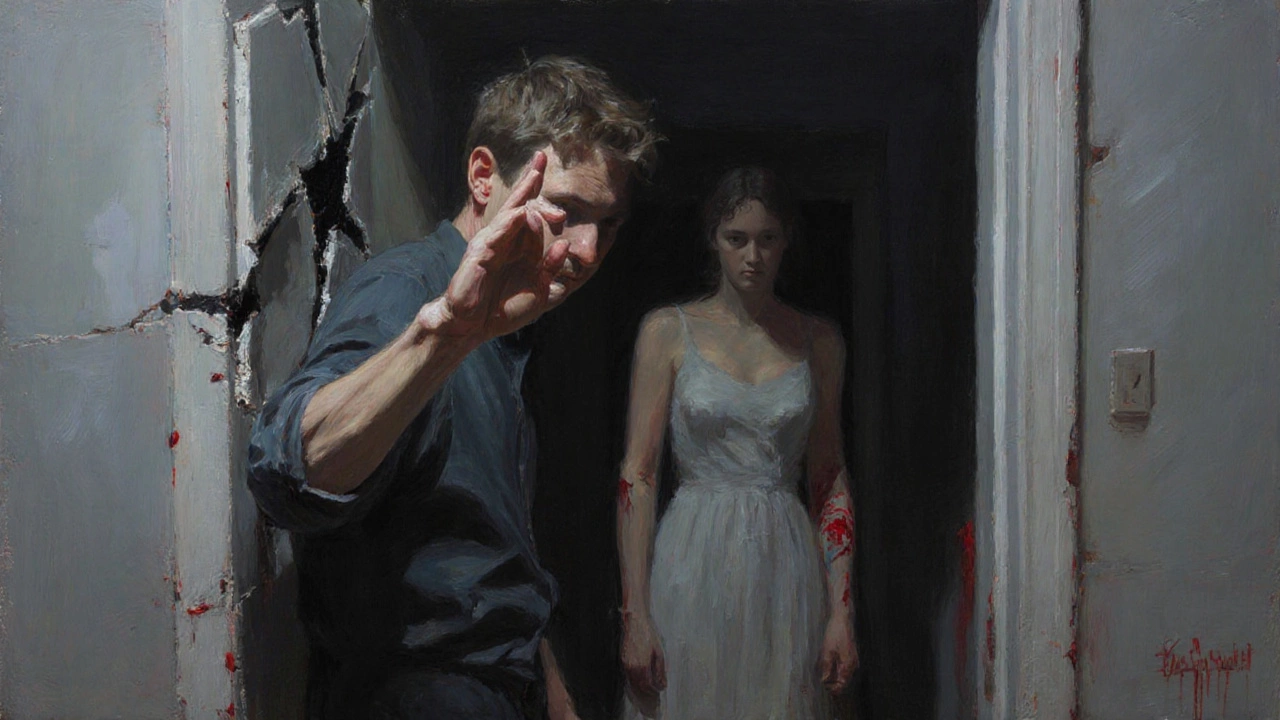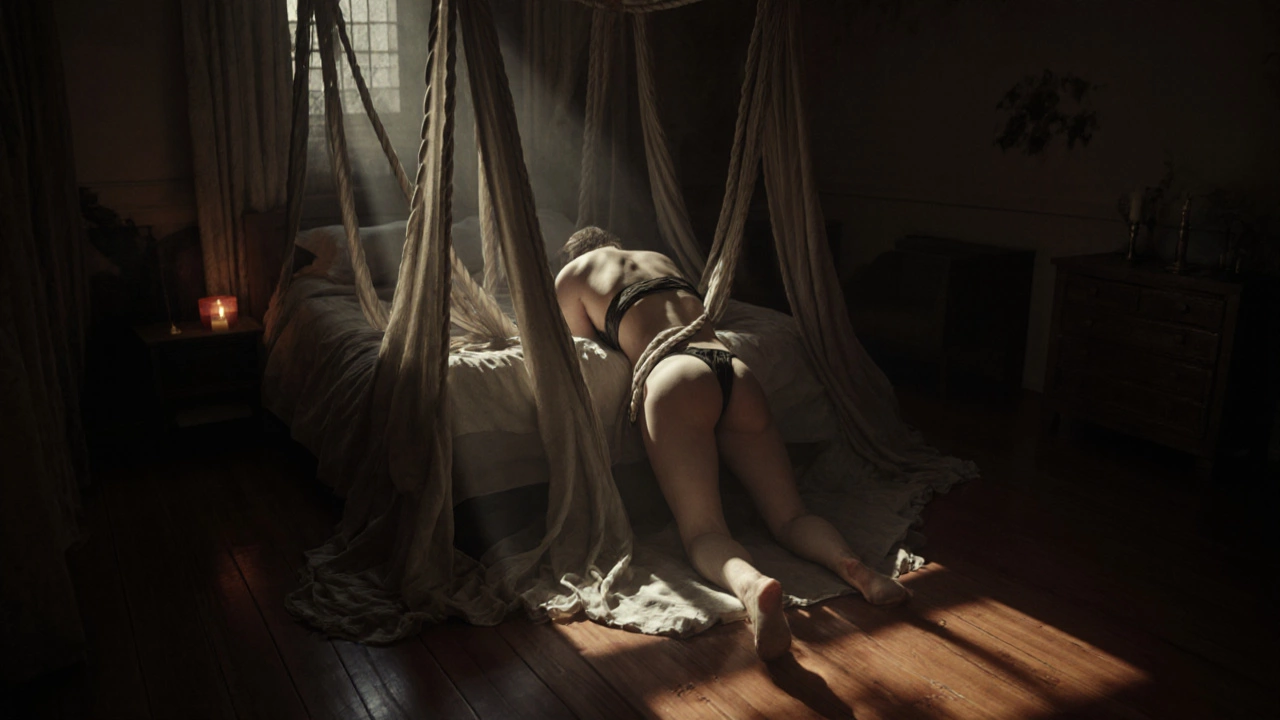The Fifty Shades Darker movie earned its R rating for one simple reason: it doesn’t hold back. Unlike the first film, which tiptoed around the edges of its source material, this sequel dives headfirst into explicit sexual content, intense power dynamics, and emotionally charged scenes that go far beyond what most mainstream romantic films show. The MPAA gave it an R rating - meaning under-17s need an adult with them - because of strong sexual content, nudity, and some language. But what exactly crossed the line? Let’s break it down.
Sex Scenes That Pushed the Boundaries
The film includes multiple prolonged sex scenes that show nudity, bondage, and dominance play in detail. One scene features Christian Grey tying Anastasia Steele to a bed with silk ropes, then using a paddle. The camera lingers on skin, body positioning, and emotional reactions - not for titillation, but to show control and vulnerability. These aren’t implied or cut away from. They’re shown. Full frontal nudity appears in at least three major scenes. The level of physical intimacy is raw and unfiltered, something rarely seen in films marketed as romantic dramas.
Compare this to other R-rated romantic films like Blue Valentine or Love & Mercy. Those films use intimacy to explore emotional decay or psychological trauma. Fifty Shades Darker uses it to sell fantasy. The difference matters. The sex here isn’t about connection - it’s about power, ritual, and control. That’s why the MPAA flagged it: it’s not just sexual, it’s sexually explicit with a narrative that glorifies non-consensual power plays under the guise of consent.
Consent Isn’t Always Clear
One of the biggest criticisms of the Fifty Shades series isn’t the sex - it’s the messaging around it. In Fifty Shades Darker, Christian repeatedly ignores Anastasia’s verbal “no” and pushes boundaries even after she says she’s uncomfortable. He uses emotional manipulation, guilt, and isolation to get what he wants. The film doesn’t condemn this behavior. It frames it as romantic devotion. The MPAA doesn’t rate films for ethics, but they do rate them for impact. Scenes where a character is pressured into sexual acts - even if later labeled “consensual” - contribute to an R rating when shown graphically.
Real-world experts in sexual consent, like those from RAINN (Rape, Abuse & Incest National Network), have pointed out that the dynamic portrayed here normalizes coercive behavior. That’s not just problematic - it’s dangerous. And the film doesn’t offer any corrective narrative. No therapist intervenes. No friend calls it out. No character says, “This isn’t healthy.” The silence speaks louder than the dialogue.
Nudity and Visual Detail
The nudity in Fifty Shades Darker isn’t accidental. It’s intentional. The camera lingers on bare backs, thighs, chests, and genitals in ways that go beyond what’s needed for storytelling. There’s no artistic filter. No shadowing. No cutaways. When Anastasia is shown fully nude during a massage scene, the camera rotates around her body slowly, emphasizing shape and skin texture. This isn’t sensual - it’s voyeuristic. And that’s exactly what the MPAA looks for when assigning ratings.
Compare it to Call Me By Your Name, which also has nudity and intimacy. In that film, nudity serves vulnerability. In Fifty Shades Darker, it serves spectacle. The difference is in intent. One invites empathy. The other invites gaze. The latter triggers higher content flags.

Language and Emotional Intensity
It’s not just sex and nudity. The language is rougher too. Christian uses phrases like “you’re mine,” “you’ll beg for me,” and “I’ll break you” - not as metaphor, but as literal threats wrapped in romantic language. There’s a scene where he slams a door so hard it cracks, then turns to Anastasia and says, “Don’t make me angry.” The silence after that line is louder than any scream. That kind of emotional intimidation, paired with physical dominance, pushes the film into R territory.
Also, the film includes a brief but graphic scene of self-harm. Anastasia cuts her arm with a razor blade after a violent argument. It’s not shown in detail, but the blood, the trembling hands, and the aftermath are enough to trigger a content warning. The MPAA doesn’t rate films based on how disturbing they are - but when self-harm is shown alongside sexual coercion, it compounds the intensity.
Why This Matters Beyond the Rating
The R rating isn’t just a legal label. It’s a cultural signal. It tells parents, educators, and teens: this isn’t for casual viewing. This isn’t a fluffy love story. It’s a dark, complex, and potentially harmful portrayal of relationships wrapped in luxury and fantasy. The fact that it’s based on a bestselling novel doesn’t make it safe. The fact that it stars a popular actor doesn’t make it appropriate.
Many teens watched the first film because it was marketed as “romantic.” They walked into Fifty Shades Darker expecting more of the same. What they got was something far more unsettling. The R rating exists to protect younger viewers from content they aren’t emotionally equipped to process. And honestly? Many adults aren’t either.

How It Compares to Other R-Rated Romances
Here’s how Fifty Shades Darker stacks up against other R-rated romantic films:
| Movie | Primary Reason for R Rating | Sexual Content | Nudity | Emotional Intensity |
|---|---|---|---|---|
| Fifty Shades Darker | Explicit BDSM, coercion, self-harm | High - prolonged, detailed scenes | High - full nudity, multiple angles | High - manipulation, threats, isolation |
| Blue Valentine | Realistic marital breakdown | Moderate - intimate but not graphic | Moderate - partial nudity | Very High - emotional abuse, despair |
| Eternal Sunshine of the Spotless Mind | Abstract surrealism, emotional trauma | Low - implied | Low - brief | High - memory loss, grief |
| The Notebook | Mild language, brief nudity | Low - kissing, implied | Low - back nudity, no detail | Moderate - illness, separation |
As you can see, Fifty Shades Darker stands out for the combination of explicit physical content and toxic emotional dynamics. It’s not the only R-rated romance. But it’s one of the few where the romance is built on control, not care.
What You Should Know Before Watching
If you’re thinking of watching Fifty Shades Darker, here’s what to expect:
- Multiple scenes of full nudity and sexual activity
- Graphic depictions of bondage and impact play
- Emotional manipulation presented as love
- Verbal threats disguised as passion
- A brief but disturbing self-harm scene
- No redemption arc for the abusive behavior
It’s not a horror movie. But it’s not a romance either. It’s a fantasy with real-world consequences.
Final Thoughts
The R rating for Fifty Shades Darker isn’t arbitrary. It’s a direct response to the film’s content - not just what’s shown, but how it’s framed. The movie doesn’t ask you to question Christian’s behavior. It asks you to desire it. That’s why it’s rated R. Not because it’s sexy. Because it’s dangerous.
If you’re watching for entertainment, fine. But if you’re watching to learn about relationships? Walk away. Real love doesn’t come with contracts, safewords, and silence. It comes with respect, boundaries, and the freedom to say no - without consequences.
Is Fifty Shades Darker suitable for teenagers?
No. The film contains explicit sexual content, nudity, emotional manipulation, and a scene of self-harm. The MPAA’s R rating means it’s not intended for viewers under 17 without an adult. Even with an adult, the themes are emotionally complex and potentially harmful for young viewers still forming their views on relationships and consent.
Why was the first Fifty Shades movie rated PG-13 but this one R?
The first film, Fifty Shades of Grey, toned down the most explicit scenes to get a PG-13 rating. It implied sex rather than showing it. Fifty Shades Darker went further - showing full nudity, prolonged bondage scenes, and uncut sexual encounters. The studio tried to keep it PG-13, but the MPAA refused. The content was too graphic to pass without an R.
Does the R rating mean the movie is bad?
Not necessarily. An R rating means the content is intended for mature audiences, not that the film is poorly made. Some critically acclaimed films are R-rated. But in this case, the rating reflects content that many experts say promotes unhealthy relationship dynamics. The problem isn’t the rating - it’s the message.
Are there any alternatives to Fifty Shades Darker that are less explicit?
Yes. If you like romantic tension without explicit scenes, try Me Before You, The Half of It, or Pride & Prejudice (2005). These films focus on emotional connection, chemistry, and character growth without graphic nudity or BDSM. For steamy but respectful romance, Call Me By Your Name offers intimacy with emotional depth - and no coercion.
Why does the movie show so much nudity if it’s a romance?
It’s not really a romance in the traditional sense. The nudity serves the fantasy of control and possession, not love. The filmmakers used sexual imagery to attract attention and sell tickets, not to explore intimacy. That’s why it feels more like a soft-core thriller than a love story. The romance is a cover for the spectacle.

